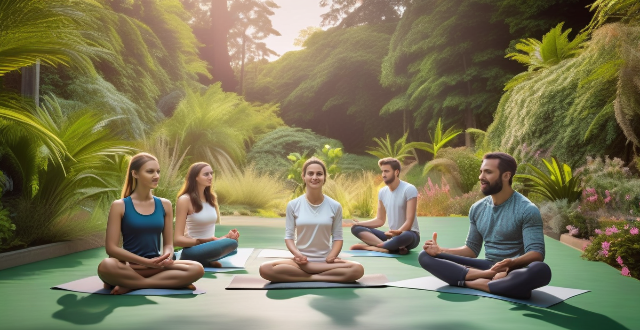Yoga integrates physical activity and mental relaxation through various practices like asanas, pranayama, dhyana, and dharana. Asanas improve flexibility, strength, and endurance, while vinyasa increases heart rate for cardiovascular exercise. Pranayama techniques enhance lung capacity and stamina. Meditation calms the mind, and concentration practices sharpen focus. Yogic philosophy promotes emotional stability. Mindful movement connects physical practice with mental awareness, synchronized breath reduces strain, and restorative poses allow for deep relaxation. Overall, yoga offers a holistic approach to wellness by harmoniously blending body and mind.

How Does Yoga Combine Physical Activity with Mental Relaxation?
Yoga is a practice that seamlessly integrates physical activity with mental relaxation, offering a holistic approach to wellness. This ancient practice originated in India and has gained worldwide popularity for its numerous health benefits. Let's delve into how yoga achieves this harmonious blend of body and mind.
Physical Activity in Yoga
Asanas (Postures)
- Asanas are the physical postures practiced in yoga. They involve stretching, flexing, and balancing, which help improve flexibility, strength, and endurance.
- Examples include the Warrior pose, Downward-Facing Dog, and Tree pose.
Vinyasa (Flow)
- Vinyasa is a style of yoga where movement is synchronized with breath, creating a flow between postures.
- This continuous movement increases heart rate and can serve as a form of cardiovascular exercise.
Pranayama (Breath Control)
- Pranayama techniques focus on controlling the breath, enhancing lung capacity, and improving oxygenation of the body.
- Breath work also helps to build stamina during physical practice.
Mental Relaxation in Yoga
Dhyana (Meditation)
- Meditation is an integral part of yoga, aiming to calm the mind and achieve inner peace.
- It involves focusing on the breath, a mantra, or an object to quiet the mind and reduce stress.
Dharana (Concentration)
- Dharana practices help to sharpen focus and attention by concentrating on a single point.
- This concentration can lead to deeper meditation and mental clarity.
Yogic Philosophy
- Yoga philosophy teaches practitioners about non-attachment, self-acceptance, and living in the present moment.
- These principles encourage emotional stability and mental relaxation.
Integrated Practice
Mindful Movement
- During asanas, practitioners are encouraged to move mindfully, being fully present in each posture.
- This mindfulness connects the physical movement with mental awareness, fostering relaxation while engaging the body.
Synchronized Breath
- Coordinating breath with movement allows for a smooth transition between poses, reducing physical strain and promoting mental calmness.
- Deep, controlled breathing helps to lower stress levels and induce relaxation.
Restorative Poses
- Restorative poses like Savasana (Corpse Pose) provide an opportunity for complete relaxation at the end of a session.
- These poses allow the body to rest deeply while the mind enters a state of tranquility.
---
In conclusion, yoga combines physical activity with mental relaxation through a variety of practices such as asanas, pranayama, dhyana, and dharana. By synchronizing movement with breath and incorporating yogic philosophy, yoga creates an environment where the body can be active while the mind finds peace. This unique combination makes yoga a powerful tool for overall well-being.